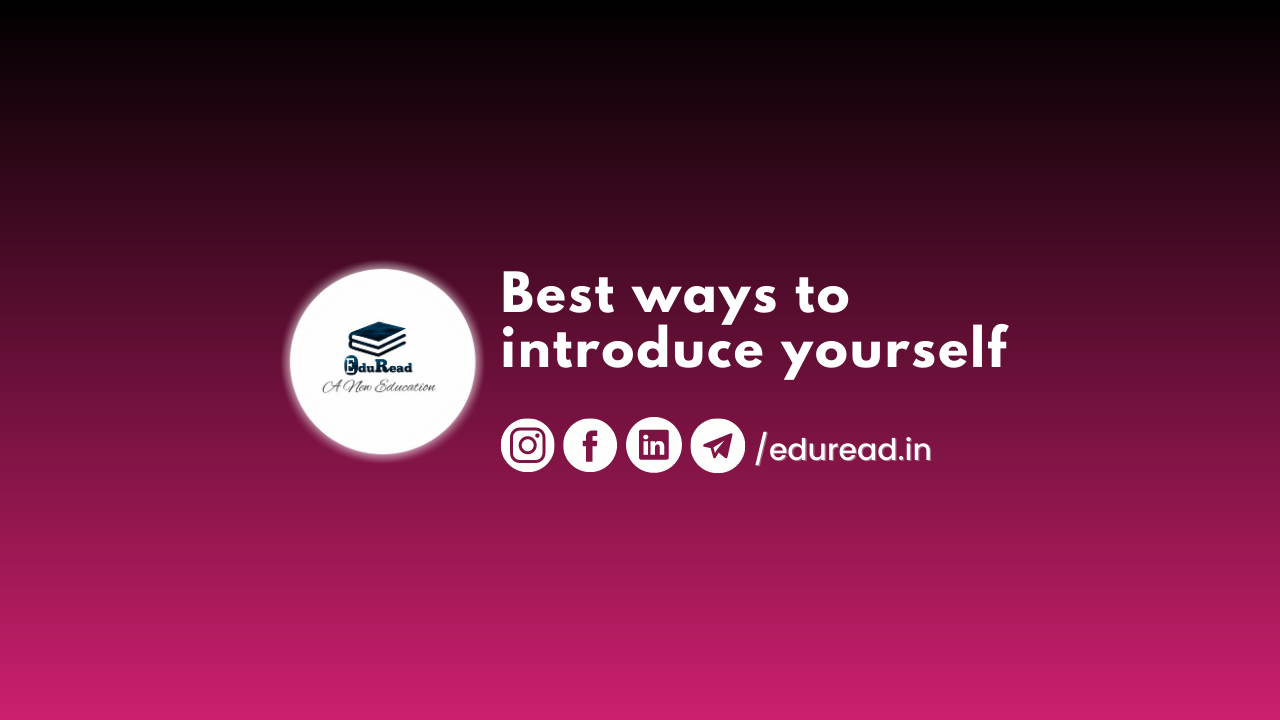Introduction
Introducing oneself is a crucial skill that can be utilized in numerous settings, from professional networking events to personal gatherings. How you introduce yourself sets the tone for your relationship with the person you are speaking with. A well-crafted introduction can help establish trust, respect, and credibility, while a poorly executed one can hinder your chances of making a positive impression. In this blog, we will discuss the best ways to introduce yourself effectively in various settings.
Keep it short and sweet
When introducing yourself, it’s essential to keep it brief and to the point. Your introduction should not be a monologue or a lengthy list of accomplishments. Instead, focus on the most important details that you want the other person to know about you. It’s best to limit your introduction to 30 seconds to a minute. This timeframe is usually enough to convey your key details and capture the other person’s interest.
Start with a strong opening
Your opening statement is crucial as it sets the tone for the rest of your introduction. A strong opening can capture the other person’s attention and pique their interest in what you have to say. Instead of beginning with a generic greeting, try to be more creative and come up with an opening that is memorable and engaging. For example, you could start with a thought-provoking question, a surprising fact, or a humorous anecdote.
Use an elevator pitch
An elevator pitch is a short summary of who you are, what you do, and what you can offer. It’s called an elevator pitch because it should be concise enough to deliver in the time it takes to ride an elevator. An elevator pitch is an excellent tool to have in your arsenal when introducing yourself in a professional setting, such as a job interview or a networking event. It should be no longer than 60 seconds and should highlight your unique selling points, such as your skills, achievements, and experience.
Show your enthusiasm
When introducing yourself, it’s crucial to show your enthusiasm for the topic or the person you’re speaking with. People are naturally drawn to individuals who are passionate about what they do, and enthusiasm can help create a positive first impression. If you’re introducing yourself to someone in your field, for example, you could express your excitement about the latest industry trends or share your thoughts on a current hot topic. Enthusiasm can help establish a common ground and facilitate a meaningful conversation.
Be mindful of your body language
Your body language plays a significant role in how others perceive you, and it’s crucial to be mindful of it when introducing yourself. Your body language should convey confidence, friendliness, and openness. Make eye contact with the other person, smile, and stand or sit up straight. Avoid crossing your arms or fidgeting, as this can signal nervousness or defensiveness. A confident and relaxed demeanor can help create a positive first impression and establish rapport with the other person.
Tailor your introduction to the setting
It’s essential to tailor your introduction to the setting you’re in. The way you introduce yourself in a professional setting, such as a job interview, will be different from how you introduce yourself in a personal setting, such as a social gathering. In a professional setting, focus on your relevant experience and skills, while in a personal setting, you could share your hobbies, interests, or a funny story. Being aware of the context can help you craft an introduction that is appropriate and effective.
Practice, practice, practice
Like any skill, introducing oneself takes practice. It’s a good idea to rehearse your introduction before you’re in the actual situation. Practicing can help you refine your pitch, identify areas for improvement, and increase your confidence. You can practice in front of a mirror or with a friend or family member. You can also record yourself and listen to it to identify any areas that need improvement. The more you practice, the more comfortable and confident you will become when introducing yourself in real-life situations.
Use a memorable closing
Just like your opening, your closing statement is also essential as it’s the last thing the other person will remember about you. A memorable closing can leave a lasting impression and help solidify the relationship. You could end with a call to action, such as “Let’s connect on LinkedIn” or “I look forward to hearing from you soon.” Alternatively, you could end with a memorable quote or a fun fact that relates to the conversation you just had.
Be authentic
Perhaps the most crucial aspect of introducing oneself is being authentic. Trying to be someone you’re not or pretending to have more experience or knowledge than you actually do can be detrimental in the long run. It’s essential, to be honest about your skills, experience, and goals. Authenticity can help establish trust, and it’s easier to maintain a relationship when you’re true to yourself.
Conclusion
In conclusion, introducing oneself effectively is a critical skill that can be utilized in various settings. Keeping it short and sweet, starting with a strong opening, using an elevator pitch, showing enthusiasm, being mindful of body language, tailoring the introduction to the setting, practicing, using a memorable closing, and being authentic are some of the best ways to introduce oneself. With practice and patience, anyone can master the art of introducing oneself and making a positive impression on others. Remember, the way you introduce yourself can set the tone for your relationship with the other person, so make it count!
Follow us on our social handles
To know more, check out here:

